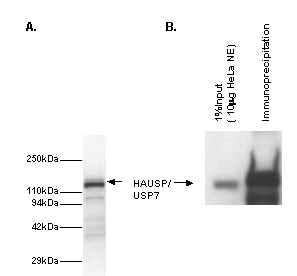DR1014 Sigma-AldrichAnti-HAUSP Rabbit pAb
Recommended Products
Overview
| Replacement Information |
|---|
Key Spec Table
| Host |
|---|
| Rb |
| References | |
|---|---|
| References | Li, M., et al. 2004. Mol. Cell 13, 879. Muyang, L., et al. 2002. Nature 416, 648. Vugmeyster, Y., et al. 2002. Mol. Immunol. 39, 431. |
| Product Information | |
|---|---|
| Form | Liquid |
| Formulation | In Tris-citrate/phosphate buffer, pH 7.0-8.0. |
| Positive control | HeLa cell nuclear extracts |
| Preservative | ≤0.1% sodium azide |
| Physicochemical Information |
|---|
| Dimensions |
|---|
| Materials Information |
|---|
| Toxicological Information |
|---|
| Safety Information according to GHS |
|---|
| Safety Information |
|---|
| Product Usage Statements |
|---|
| Packaging Information |
|---|
| Transport Information |
|---|
| Supplemental Information |
|---|
| Specifications |
|---|
| Global Trade Item Number | |
|---|---|
| Catalogue Number | GTIN |
| DR1014 | 0 |
Documentation
Anti-HAUSP Rabbit pAb Certificates of Analysis
| Title | Lot Number |
|---|---|
| DR1014 |
References
| Reference overview |
|---|
| Li, M., et al. 2004. Mol. Cell 13, 879. Muyang, L., et al. 2002. Nature 416, 648. Vugmeyster, Y., et al. 2002. Mol. Immunol. 39, 431. |








